- Home
- Penelope Lively
Life in the Garden Page 2
Life in the Garden Read online
Page 2
Nowadays, all my garden talk is with Josephine, who has created, over the last twenty years, a garden for the Somerset cottage that is our toehold there, just down the lane from my grandmother’s house and garden, a cottage built by my grandfather in 1929 as the gardener’s cottage in the days when you could acquire a bit of land and run up a building if you felt like it. Today, and long since, all that area is part of Exmoor National Park, and you can’t lay a finger on a cowshed, let alone propose anything as intrusive as a building. The garden that Josephine has made has areas segueing into one another, defined by yew hedges that are now full height and have been for several years – I had no idea you could establish a yew hedge so quickly. The main borders are by the house, and surround a lawn with a sundial from the old garden in the middle, which leads on to a further yew-enclosed lawn that works nicely for croquet now, and then on through a yew arch into the little orchard, with compost bins and rubbish heap tucked away at the end, beyond beech hedging. The two cherries she planted at the very start to give height to the garden – Prunus avium, the native cherry – are mature now, out in full bridal glory in May. Shirley poppies and aquilegia seed themselves, the originals brought from my grandmother’s garden, and there are coloured primroses from there too, along with the regular primrose. But my grandmother would be surprised by the planting of much of this twenty-first-century garden – Verbena bonariensis, hellebores, penstemons, alchemilla, plants not common in her day, and she would have loved them.
But Erigeron karvinskianus, the Mexican daisy, would be entirely familiar; it showered down the drystone walls of her rose garden, a Gertrude Jekyll favourite. And, for me, it has become a kind of signature plant; in London, it has obligingly seeded itself all round the railings at the front of my house, and down the iron steps to the basement. And it has spread along this side of the square, colonizing other frontages, where others have clearly welcomed it – only one insensitive neighbour has torched it with weed-killer.
Thus one garden leaves its legacy in another – the butterscotch primroses and the blowsy poppies in Josephine’s garden remembering her great-grandmother’s. And Josephine’s daughter Rachel’s small London garden will be stocked almost entirely with plants and divisions from Somerset – the garden centre won’t get a look-in.
Ah, garden centres. Unavailable, of course, to my grandmother, who had to rely on postal ordering from nurseries. Today, the garden centre is a major shopping opportunity. They have a lot to answer for, and I am their ideal customer – a complete pushover, liable to load up a trolley with anything that catches my eye. They are craftily familiar with the likes of me; they know how to display, how to tempt. The garden centre has much to do with gardening fashion – many of us garden according to how the garden centre has decided that we should garden, by stocking up with this or that. I am partial to heuchera, as pot plants, and the garden centre has led me on, I know, by always having an inviting heuchera selection, set out to best advantage. And the garden centre will itself have been steered by whatever is being extolled on television; Gardeners’ World also determines how the nation is to garden. It was ever thus – there were directing influences for the Victorian and the early-twentieth-century gardener also, of course, as we shall see. But not on such a scale. Garden supply is big business now, reflecting the way in which those who garden have become younger; gardening is no longer a marginalized activity, performed mainly by the middle-aged. A shabby garden is as demeaning as a shabby house, and gardening is no longer seen by younger people as a naff, elderly thing to be doing.
I see gardening as a unifying, bonding experience, despite the competing onions and marrows at flower shows. Neighbourly gardening usually involves exchange of cuttings or divisions. Sometimes you can see, looking at a line of front gardens, where someone’s flourishing pink or Michaelmas daisy has made its way along the street, handed on to go forth and multiply. Or garden begets garden, as in my family, where descendants of my grandmother’s aquilegias and primroses fetch up in her great-great-granddaughter’s rather smaller plot.
In a particular part of north London, many gardens have a loquat – yellow fruit and strongly sweet-smelling white flowers – particularly dear to Greek Cypriots, apparently, and thus remembering that many lived in that area. In Kentish Town – and elsewhere in London, I’m sure – the line of trees along the ends of back gardens is a legacy of the field boundaries before the houses came. The tenacity, the antiquity, of plant life is something to look at later, but I find particularly telling the way in which their very names are eloquent, speaking across time: the lily travels back through Anglo-Saxon lilege to Roman lilium, fennel through fincul to feniculum, fig back to ficus. It is the same kind of eloquence as the place-name; places tell you who has been here, these plants tell who has known them, and spoken of them.
And then there is the personal resonance that a plant can have – the Proustian madeleine effect. The smell of crushed eucalyptus leaves takes me back to that Egyptian garden, the four or five great trees that edged the drive. Rosemary – and I am in Palestine, as it then was, on a hill above Jerusalem, in 1941. Actually, you want Proust to have been more specific about that Combray garden; all you learn is that the madeleine evoked ‘all the flowers in our garden’ and that ‘the whole of Combray and of its surroundings, taking their proper shapes and growing solid, sprang into being, town and gardens alike, from my cup of tea’. You would like some naming of names, but never mind – the point is the effect, the resonance, the power of taste and smell, their ability to summon up another time, another place.
It is becoming more and more apparent that gardens and all that is within them are never just themselves: they are allusive, evocative, and that is why they can be such fertile material for a writer. They are indeed real, earthy, prolific places, and we know them as that, we dig them, enjoy them, but they are also wonderfully referential – they are potent, flexible, can become a metaphor. And that is what I should like to get on to first – the various concepts of the garden, and garden metamorphosis.
Reality and Metaphor
On the 31st of May 1920 Virginia Woolf went gardening. Here’s what she wrote in her diary: ‘The first pure joy of the garden … weeding all day to finish the beds in a queer sort of enthusiasm which made me say this is happiness. Gladioli standing in troops; the mock orange out. We were out till 9 at night, though the evening was cold. Both stiff and scratched all over today, with chocolate earth in our nails.’ This is the commentary of a practical, hands-on gardener, a view of the garden wonderfully different from the way in which gardens surface in her novels. But, before considering that, I want to look at where it was that she was gardening, and what that garden was like.
Virginia and Leonard Woolf bought Monk’s House, at Rodmell, near Lewes, in July 1919, when she was thirty-seven. It was an old, weather-boarded house, disconcertingly austere by twenty-first-century standards – no electricity or running water, no bathroom, a privy in the garden, and only gradually did the Woolfs overcome these deficiencies. It had three-quarters of an acre of garden, and this, certainly for Leonard, seems to have been the prime attraction. It is clear that he was the gardener-in-chief, with Virginia as an interested accomplice and frequent assistant. There was already a fine orchard (apples, plums, pears, cherries), and as time went on Leonard laid out the hard landscaping – the creation of a garden composed of discrete areas, or rooms, united by brick-paved paths, that is the basis of the garden as it is today, now in the care of the National Trust.
They evidently flung themselves at the garden with immediate enthusiasm. In September 1919 Virginia wrote: ‘We have been planting tiny grains of seed in the front bed, in the pious or religious belief that they will resurrect next spring as Clarkia, Calceolaria, Campanula, Larkspur and Scabious.’ A list of annuals – a nice mix except for the calceolaria, which fills me with horror, a nasty bulbous yellow spotty thing which would have offended the palette of otherwise pinks and blues. I do hope it failed to resurrect
. But that was evidently, for Leonard, the start of a tradition of growing from seed; later, he had greenhouses.
Caroline Zoob and her husband, Jonathan, were tenants of the National Trust at Monk’s House for ten years, and her fine book – Virginia Woolf’s Garden – is testimony to their talented management of the garden. The brief was to preserve as much as possible of Leonard’s original layout and, indeed, some of the Woolf planting preferences. Leonard and Virginia had a taste for strong colours. ‘Our garden is a perfect variegated chintz: asters, plumasters, zinnias, geums, nasturtiums and so on: all bright, cut from coloured papers, stiff, upstanding as flowers should be,’ Virginia wrote in a letter. That description has me a bit doubtful, and the sumptuous photographs in Caroline Zoob’s book show planting schemes and palettes rather more subtle and in tune with contemporary taste, though, loyally, zinnias were still grown from seed on their watch, one of Leonard’s favourites. Hardly seen elsewhere, nowadays, out of fashion, like the red-hot pokers – kniphofia – that he had (and which flare up in To the Lighthouse, as we shall see): ‘… the garden is full of zinnias. The zinnias are full of slugs. L goes out at night with a lantern and collects snails, which I hear him cracking …’ Virginia may have left pest control to him, but she certainly got weeding: ‘Very soon, in any occupation, one makes a game of it. I mean … that one gives characters to weeds. The worst is the fine grass which has to be sifted out conscientiously. I like uprooting thick dandelions and groundsel.’
They had a gardener, of course. Essential for a garden that size, and more was added later when Leonard bought the adjacent field, though clearly he always weighed in much himself. A serious, substantial garden, and it was of central importance to Virginia, even if it was Leonard who was the driving force. She worked in her own writing lodge in a corner of the orchard, and her diary is full of moments of appreciation: ‘The great lily in the window had four flowers. They opened in the night’; ‘Never has the garden been so lovely … dazzling one’s eyes with reds and pinks and purples and mauves’; ‘a blaze of dahlias’. Vegetables and fruits were grown too – peas, strawberries, beans and lettuce by 1921, and the apples were harvested on an industrial scale.
Leonard’s gardening style sounds to have been idiosyncratic, sui generis, giving licence to personal taste and preference – all those hot colours. No hint of the then-current Gertrude Jekyll influence, say. Vita Sackville-West came there often, that doyenne of early-twentieth-century gardening, but there seems no evidence that she and Virginia talked gardens much, if at all. Virginia herself said that the Monk’s House garden was ‘all Leonard’s doing’, and Caroline Zoob feels that she was neither knowledgeable nor technically skilled. But the essential point, for me, is that she intensely observed gardens and plants, and that she could get down to it with a will, get her hands dirty, attack the dandelions and the groundsel.
On the 24th of March 1941, she wrote in her diary, ‘L. is doing the rhododendrons.’ On the 28th, she walked out of the garden, through the gate at the end, and down to the bank of the river Ouse, where she drowned herself.
So, she was a real gardener, Virginia Woolf; she planted, she weeded, she knew the chocolate earth. But now, here she is when the garden becomes a fictional device: ‘Flower after flower is specked on the depths of green. The petals are harlequins. Stalks rise from the black hollows beneath. The flowers swim like fish made of light upon the dark, green waters. I hold a stalk in my hand. I am the stalk …’ This is from The Waves, and is the thought process of one of the six characters whose voices tell the story, turn by turn. Louis is a child in this opening section; the other five respond similarly to what they are seeing of the world around them. I can appreciate this as representing the immediacy of a child’s vision, but this is merely establishing the tone for the rest of the narrative. Stream of consciousness, of course, and in its most exaggerated form. The garden, in that passage, becomes a vehicle for method, style. There is little narrative in the novel, as such – the six friends grow up, remain connected, meet again all together in later life in two set-piece scenes, react to and discuss a seventh, who is not given a voice. They do emerge as separate personalities – three men, three women – though Virginia Woolf herself said that she meant them in a sense to be not so much separate characters as facets of a single consciousness, and called the book a prose-poem. The Waves is remarkable, unique, but I can’t enjoy it: too stylized, too exaggerated.
I am much happier with To the Lighthouse. We are in stream-of-consciousness territory here again, but more in the sense of individual interior monologues, and a garden surfaces time and again as essential backdrop. This is the novel in which Virginia Woolf exorcized, as it were, the power over her of her long-dead parents. They become father and mother of the eight Ramsay children, in the novel, holidaying in what would now be called their second home, on Skye, in the Hebrides, and later returning there as adults after Mrs Ramsay’s death. In this last section, the garden speaks for time passing, for the long neglect of the unvisited place: ‘Poppies sowed themselves among the dahlias; the lawn waved with long grass; giant artichokes towered among roses; a fringed carnation flowered among the cabbages …’ There is precision here: that fringed carnation, which one can visualize, perhaps a pink, or Sweet William, plenty of all three are fringed. And I particularly like the artichokes among the roses. Here is a garden run riot, no longer under control, and making a narrative point.
Elsewhere in the novel, earlier on, there is mention of big clumps of red-hot pokers – kniphofia, not much favoured today, and so placing the garden in time, in the early twentieth century – of pampas grass (ditto), of urns of trailing red geraniums, of Mrs Ramsay wondering whether to send bulbs for planting when she goes home, but if she did, would the gardener remember to plant them? There is reference to the ‘jacmanna’, which is bright violet, and would have had me baffled were it not for a scholarly note in my edition of the book explaining that what is meant is probably Clematis ‘Jackmanii’. Oh, I see. How odd, though, that she calls it that; is it a mistaken rendering of the name, or some nickname of the day for this most common kind of clematis? But I love all this detail; it is the garden observed and remembered by a writer who has noticed gardens and plants, could name names, had experienced the chocolate earth herself. It is an aspect of the accuracy that makes To the Lighthouse such a vivid, evocative read; a place, a time, a group of people, conjured up through different eyes, differing sensibilities.
And then there is ‘Kew Gardens’, that short story – if you can call it that – which is, I suppose, the essence of modernist writing, and in which, indeed, plants, a garden, are essential features: ‘From the oval-shaped flower-bed there rose perhaps a hundred stalks spreading into heart-shaped or tongue-shaped leaves half way up and unfurling at the tip red, blue or yellow petals marked with spots of colour raised upon the surface; and from the red, blue or yellow gloom of the throat emerged a straight bar, rough with gold dust and slightly clubbed at the end. The petals were voluminous enough to be stirred by the summer breeze, and when they moved, the red, blue and yellow lights passed one over the other, staining an inch of the brown earth beneath with a spot of the most intricate colour.’ Thus, and more, runs the account of the flower bed, past which walk, in turn, four couples – a husband and wife, an old and a younger man, two women, a courting couple. The detached narrative shifts from the flower bed to the couples, each of whom are shown in a brief exchange which suggests that there is not much communication between them.
They seem to be drifting purposelessly; within the flower bed a snail is also on the move, and the element of the story that I find satisfying is the bold attempt at the point of view of a snail: ‘Brown cliffs with deep green lakes in the hollows, flat, blade-like trees that waved from root to tip, round boulders of grey stone, vast crumpled surfaces of a thin crackling texture – all these objects lay across the snail’s progress between one stalk and another to his goal … The snail had now considered every possible method of
reaching his goal without going round the dead leaf or climbing over it. Let alone the effort needed for climbing a leaf, he was doubtful whether the thin texture which vibrated with such an alarming crackle when touched even by the tip of his horns would bear his weight; and this determined him finally to creep beneath it.’ The snail has purpose, a goal, though we never learn what that is; the four couples appear aimless. And for the closing paragraph things dissolve into an impressionist haze: ‘Yellow and black, pink and snow white, shapes of all these colours, men, women, and children were spotted for a second upon the horizon … dissolving like drops of water in the yellow and green atmosphere.’ This is Virginia Woolf at her most extreme; you either relish it or shy away. The relevance here is that opening account of the flowers, which is both precise and, for me, disturbing, unsettling. What are they? Heart-shaped or tongue-shaped leaves, red, blue or yellow petals with a throat from which emerges a straight bar, rough with gold dust and slightly clubbed at the end. Exact enough – one should be able to identify them, but I am defeated. I have no idea what they are.

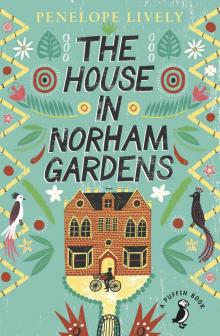 The House in Norham Gardens
The House in Norham Gardens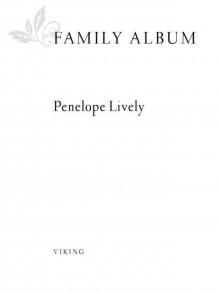 Family Album
Family Album Life in the Garden
Life in the Garden Oleander, Jacaranda: A Childhood Perceived
Oleander, Jacaranda: A Childhood Perceived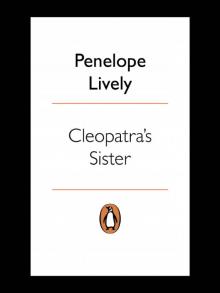 Cleopatra's Sister
Cleopatra's Sister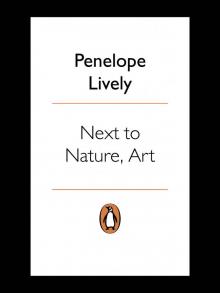 Next to Nature, Art
Next to Nature, Art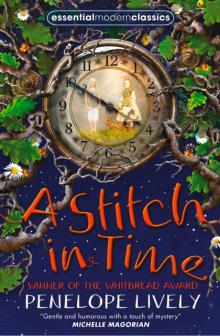 A Stitch in Time
A Stitch in Time Moon Tiger
Moon Tiger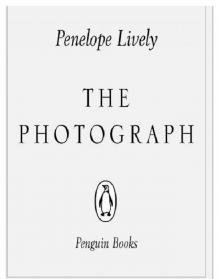 The Photograph
The Photograph Heat Wave
Heat Wave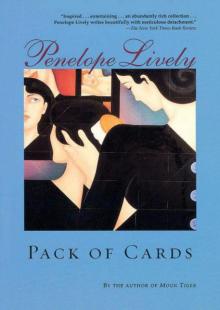 Pack of Cards
Pack of Cards Spiderweb
Spiderweb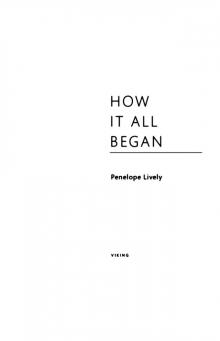 How It All Began
How It All Began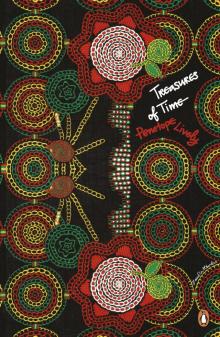 Treasures of Time
Treasures of Time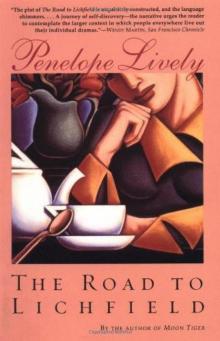 The Road to Lichfield
The Road to Lichfield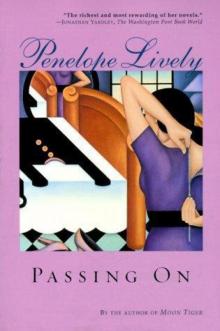 Passing On
Passing On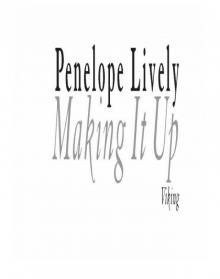 Making It Up
Making It Up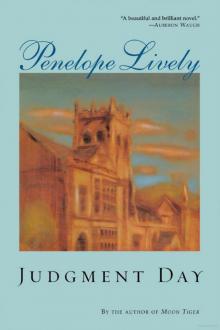 Judgment Day
Judgment Day The Purple Swamp Hen and Other Stories
The Purple Swamp Hen and Other Stories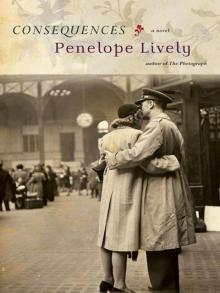 Consequences
Consequences *****Passing On*****
*****Passing On*****